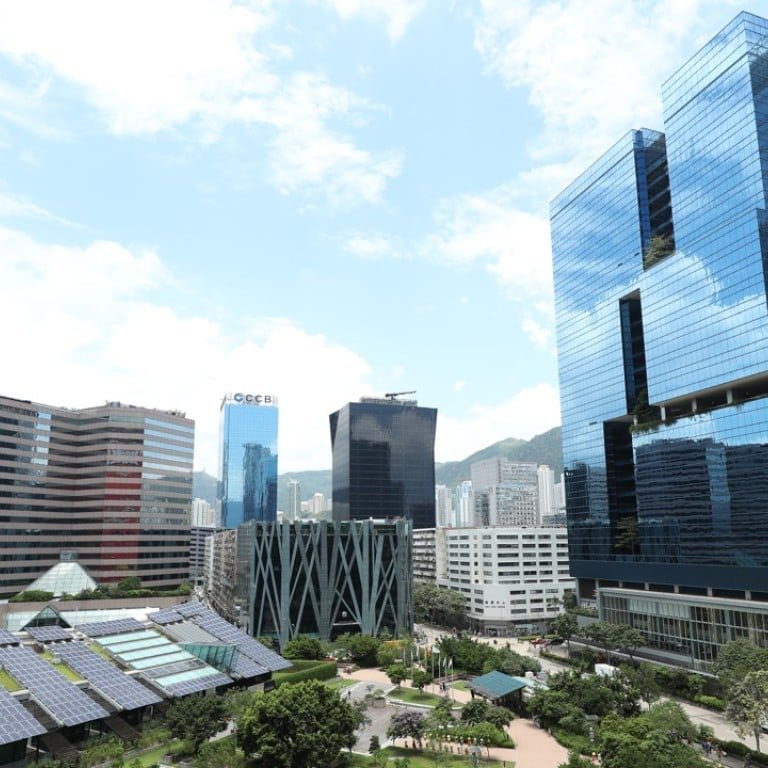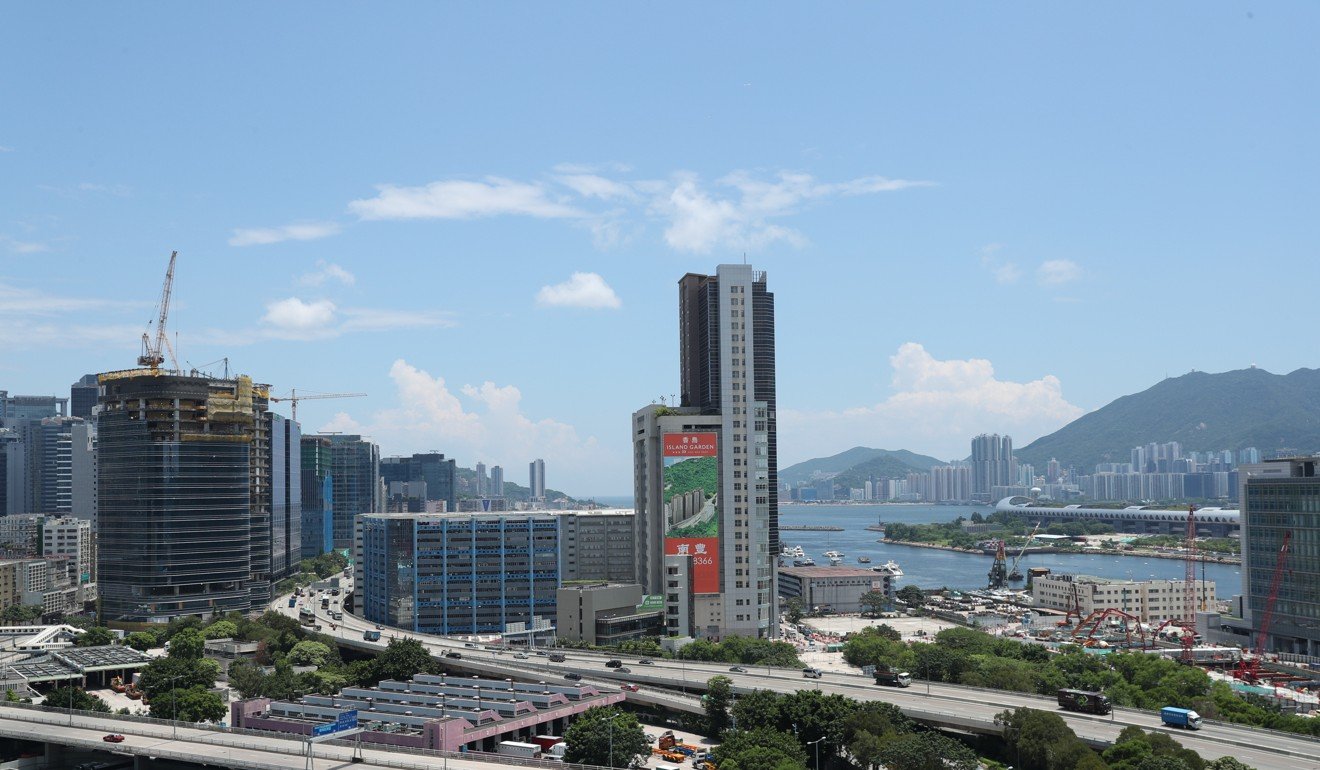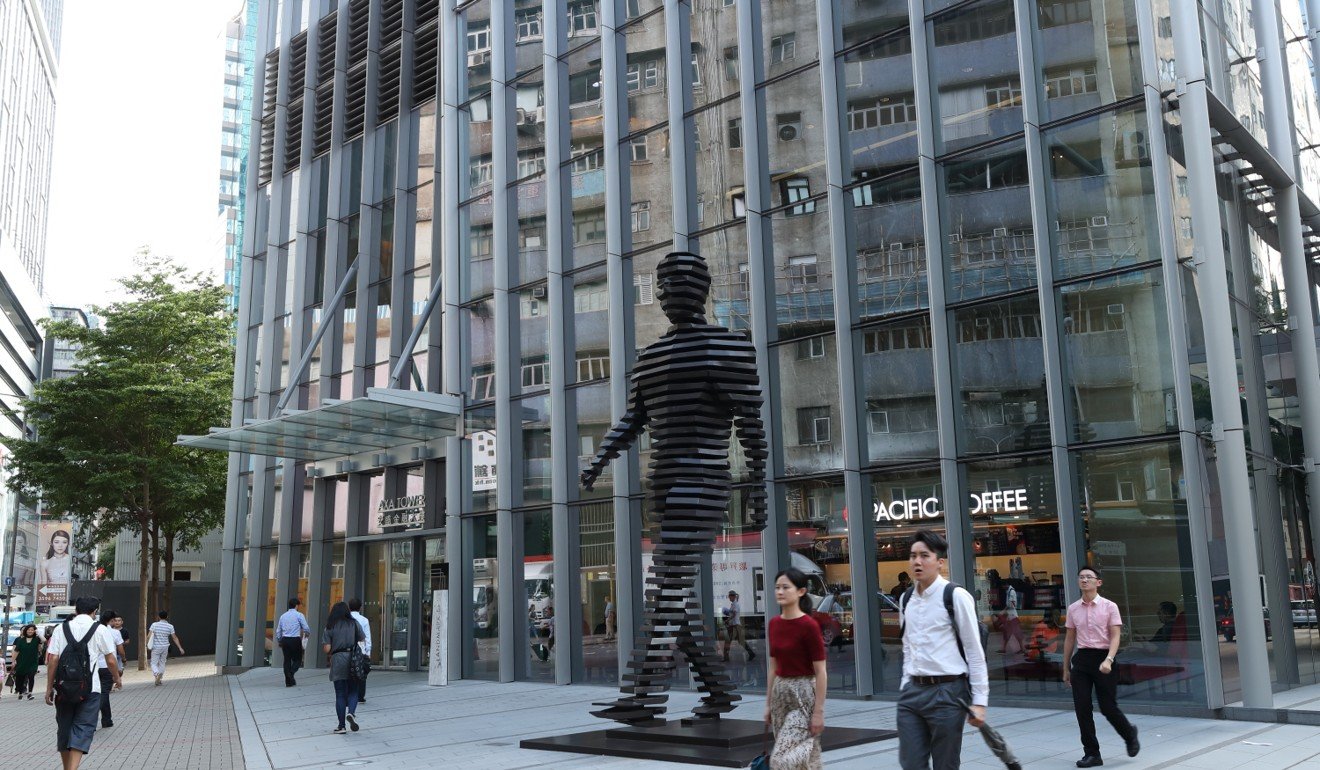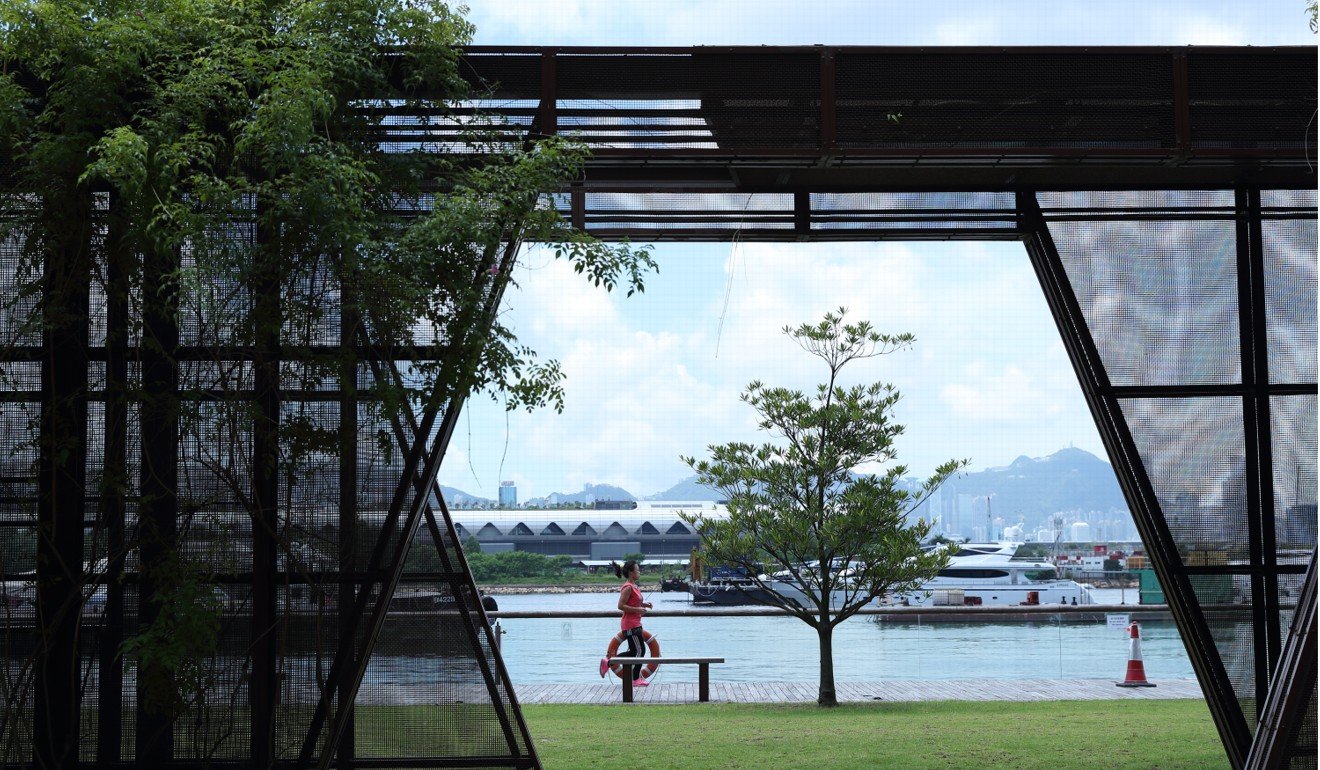
Industrial evolution: Kowloon East’s journey to becoming Hong Kong’s first ‘smart city’
- From zero-carbon buildings to a new waterfront promenade, Kwun Tong is transforming from an industrial centre into a futuristic technology and creative hub
Smart technology, green rooftops, ubiquitous Wi-Fi, public art, creative industry... these are just a few of the things that come to mind when imagining what a ‘smart city’ might look like.
In Hong Kong, this urban vision is coming to life in an unlikely place: Kowloon East. Formerly an epicentre of manufacturing, the industrial district is set to become Hong Kong’s first smart city.
Since 2012, the Energizing Kowloon East Office (EKEO) has been ushering the area into the future through a series of revitalisation projects that includes zero-carbon buildings, smart technology, Grade A commercial towers and reimagined public spaces.
East side story
In the 1950s, as Hong Kong transitioned into a manufacturing mecca, the government earmarked Kowloon East as the city’s industrial heart. To prepare Kowloon East for success, the government reclaimed land, and built factories, warehouses and satellite housing complexes.
Sometimes they had to stop in the middle of the street to let an airplane land at Kai Tak. Can you imagine?
“Kwun Tong was a reclaimed area [formerly salt fields] that played a very important role in the 1950s when Hong Kong experienced what we call a transferred industrialisation process,” says Professor Mee Kam Ng, a specialist in sustainable development and the director of the Chinese University of Hong Kong’s Urban Studies Programme.
The iconic Kai Tak International Airport, with its unforgettable landing on Victoria Harbour’s edge, sat in the centre of it all as a logistical hub. “If you talk to the older generation, they will tell you stories of walking to work. Sometimes they had to stop in the middle of the street to let an airplane land at Kai Tak. Can you imagine?”
But following the opening of mainland China in the late 1970s, many companies relocated their warehouses across the border in order to reduce operating costs. In the ensuing decades, Kwun Tong’s manufacturing industry declined and many old buildings were left to be revitalised.
Kwun Tong 2.0
In recent years, Kowloon East has seen another transformation, this time catapulting the district into the future as Hong Kong’s first smart city and second Central Business District.
The definition of a ‘smart city’ varies depending on who you ask, but urban and climate strategist Dr Boyd Cohen says smart cities often exhibit similar characteristics. First, they usually adopt Information and Communications Technology (ICT) so as to use resources in a more efficient manner, resulting in lower costs and energy consumption. This could mean smart traffic lights designed to optimise driving conditions, or responsive lights to save energy.

In addition, smart cities often support innovative and low-carbon businesses that minimise adverse effects on the environment. In the case of Kowloon East – an area that encompasses the Kai Tak Development, Kwun Tong and the Kowloon Bay business district – the EKEO has a bigger vision of what defines a smart city.
“We think that the definition should be wider,” a spokesperson from EKEO told SCMP. “Apart from ICT, a smart city should also leverage human and social capital to facilitate the sustainable growth of society and improve the quality of living.”
With this mission in mind, in 2012, the Hong Kong government established the EKEO to optimise city planning, review land use and beautify the district’s neighbourhoods. The multi-stage plan will improve mobility and walkability, environmental quality, infrastructure and lifestyle.
According to the “Developing Kowloon East into a Smart City District – Feasibility Study”, Kwun Tong will introduce a number of tech-savvy enhancements, such as smart recycling bins, multi-purpose lamp posts, real-time parking vacancy information, electric vehicle charging facilities, Wi-Fi hotspots and a Smart Crowd Management System – all of which should improve everyday life in the district.
A commercial hub
Quite simply, Kowloon East offers significantly reduced rentals from most core markets, and a higher return for money in terms of building quality
After the demise of the manufacturing industry, many artistic and creative types began setting up studios or boutiques in unused warehouse spaces. Creative concept stores soon followed, including the likes of MarblePrintClay, Biking the Moment, and HOW Concept Store and Food Factory. Tucked away in lofty warehouse spaces, these designer dens have injected new life into Kwun Tong and lured young artists and artisans to the area.
But independent shop owners and artists aren’t the only ones taking notice. Several multinational companies have relocated their regional headquarters to Kwun Tong, including Citibank, AXA, DHL Express, Mott MacDonald, Nike, Leo Burnett, BEA, and Manulife.
In addition, The Quayside – a mixed-use development seeking BEAM, LEED and WELL certification, and located in the Kowloon Bay Action Area – has sold more than half its office units, well ahead of completion in 2019. Looking ahead, the government estimates that Kowloon East will become Hong Kong’s second-largest hub for Grade A office buildings by 2020.

“The area’s office leasing market has been extremely active since early this year,” Adrian Tang, head of Kowloon markets at JLL Hong Kong, tells SCMP. “Quite simply, Kowloon East offers significantly reduced rentals from most core markets, and a higher return for money in terms of building quality.”
New public spaces
I hope to see more experiments like this in Hong Kong in the future – it will make the city a more interesting place
Luring creative minds and big business is just half the battle. To improve the overall living experience in the area, the EKEO has partnered with social enterprises and universities to elevate the district’s public spaces and pedestrian areas.
“The Project for Public Spaces (PPS) in New York promotes four aspects: accessibility, activities, comfortability and sociability. These are the key elements of building a public space – and I think the EKEO is also trying to follow these essential principles,” says Professor Ng.
“Throughout the process, so far, I think they have done a good job when it comes to partnering with other organisations and transforming leftover spaces for public use.”

The Kwun Tong Promenade, for example, turned a former cargo working area into an attractive 1-kilometre strip of green lawns, interactive spaces and outdoor performance areas. Situated parallel to the promenade, Fly the Flyover – now named Vessel – creates space under the Kwun Tong Bypass so that the public can enjoy performances, art installations, urban farms, workshops, talks, pop-up shops and more.
“The government has seen success with the promenade. I hope to see more experiments like this in Hong Kong in the future – it will make the city a more interesting place,” says Professor Ng. “The Flyover area, especially, is doing really well because you can see the public spaces being used for community activities, events and everyday interactions... a people-first approach is essential for successful, sustainable urban regeneration.”
Furthermore, artistic projects such as the Back Alley pilot scheme – conducted in collaboration with social enterprise RunOurCity and the Jockey Club Design Institute for Social Innovation at The Hong Kong Polytechnic University – invited artists from all over the world to paint murals across Kwun Tong’s empty laneways and cement underpasses.
Seeing green
Architectural landmarks such as the Kai Tak Cruise Terminal, Kwun Tong Swimming Pool and Zero Carbon Building exemplify Kowloon East’s sustainable ambitions.

The cruise terminal, which was abandoned for more than two decades after Kai Tak International Airport shuttered, debuted in 2013 with a new look designed by renowned international architectural firm Foster + Partners. In its new iteration, the sinuous structure now incorporates an abundance of greenery, from the rooftop gardens to the spacious park that stretches across the tip of the peninsula and offers views of Victoria Harbour.
“I think everyone is really looking forward to enjoying the outdoor space at Kai Tak when it’s done [in 2021],” says Professor Ng. “I think these parks will serve as a green lung.”
A first of its kind in Hong Kong, the three-storey Zero Carbon Building boasts zero-net energy consumption, generating its energy on-site from photovoltaic panels and biofuel derived from waste cooking oil. Outside, the building features sprawling green landscaping with more than half its facade covered in plant life. Inside, visitors can learn more about the eco-friendly design in one of the many informative exhibition halls.
I think everyone is really looking forward to enjoying the outdoor space at Kai Tak when it’s done [in 2021]
The government plans to create a “Healthy City” with mixed-use developments, a waterfront promenade, outdoor performance venues, small-scale dining, retail boutiques and green buildings as part of its plan for Hong Kong as a whole. According to the EKEO, new buildings should have, at a minimum, LEED Gold or BEAM Plus accreditation. In addition, Kowloon East will feature electric vehicle charging stations, an abundance of greenery and tech-savvy touches.
“[Our ongoing] research projects cover such subjects as tree health alert systems, data mining techniques, environmental air quality forecasting systems, cost-benefit analysis, and more,” says the EKEO’s spokesperson. “We also encourage universities and research institutes to develop innovative smart city solutions to create a knowledge-driven platform for co-creating a smart Kowloon East.”
Such technical and energy efficient innovations will make their way into Kwun Tong homes, too. This year, for example, the EKEO invited residents of Kai Ching and Tak Long estates to join a smart city trial. Harnessing the power of all things technology – smart home appliances, for example – the government installed electricity sensors to monitor real-time electricity consumption via the Smart Energy @ KE mobile application. It also introduced a rewards scheme as an incentive to curb energy consumption.
“I think Energizing Kowloon East represents a rather distinctive government effort in trying to really use placemaking [a multi-faceted approach to creating public spaces that promote a local community’s well-being] and useful technologies in order to transform the area,” says Professor Ng. “I would like to see lessons being synthesised and shared with other districts, so community groups can identify areas where they can experiment with these kinds of energising activities.”
